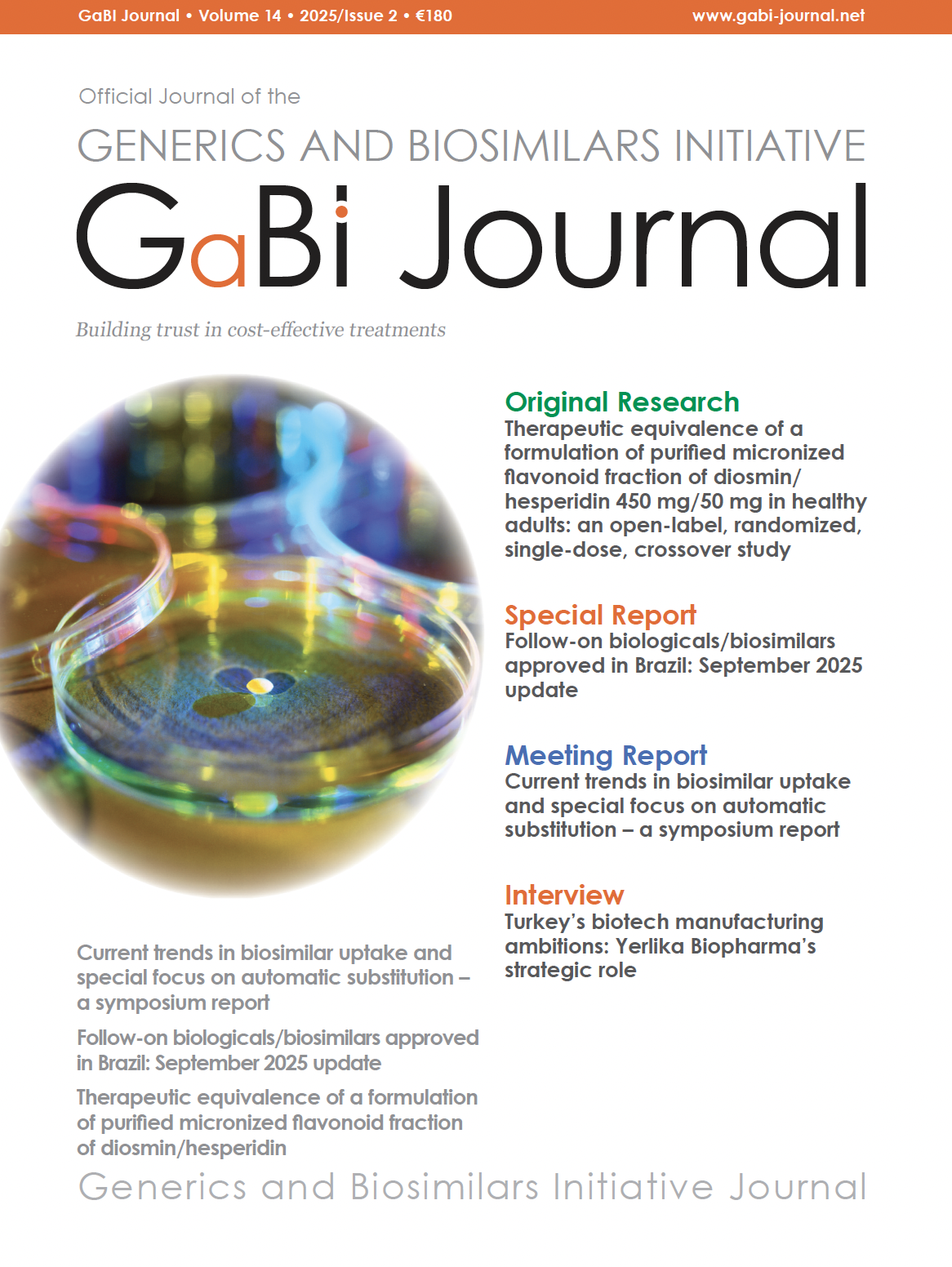Effective generics substitution
Published on 2017/02/01
Generics and Biosimilars Initiative Journal (GaBI Journal). 2017;6(2):100.
Submitted: 19 January 2017; Revised: 20 January 2017; Accepted: 23 January 2017; Published online first: 6 February 2017
In an article published in US Pharmacist [1] Manigault et al. emphasize a number of barriers that still exist to effective generics substitution in the US, and show how pharmacists, with some knowledge and insight, can help to overcome these barriers to achieve optimum patient care.
The authors pinpoint drugs with a narrow therapeutic index (NTI), i.e. those with a small threshold between effective and toxic doses that should be substituted with caution. A small variation in the dose of NTIs they argue could lead to serious adverse effects. Automatic substitution for brand NTI drugs has been strongly discouraged by several medical associations but a definitive list is not yet available. The US Food and Drug Administration (FDA) has categorized warfarin, levothyroxine, carbamazepine, digoxin, lithium carbonate, phenytoin and theophylline as NTI drugs [2, 3]. Cyclosporine, tacrolimus, sirolimus have also been classified as NTI drugs elsewhere [4].
Generics substitution of antiepileptic drugs is also cautioned against because of concerns about seizures. It is believed that bioequivalence may be compromised in these drugs because of their low water solubility. The American College of Neurology recommends against mandatory substitution of antiepileptic drugs without the approval of the patient and the prescribing physician.
Safety issues of biosimilars are highlighted owing to the immune-response issues associated with these drugs. Although the Biologics Price Competition and Innovation Act (BPCI Act) of 2009 introduced an abbreviated licensure process for biosimilars, several biosimilars were approved before the new approval process for biosimilars and are not rated as therapeutically equivalent (hyaluronidase [Hylenex, Hydase], somatropin [Omnitrope] and glucagon [GlucaGen]), with imminent approval from FDA through BPCI Act for Zarxio (filgrastim-sndz), Inflectra (infliximab-dyyb) and Remicade (infliximab).
Pharmacists are advised to refer to the Approved Drug Products with Therapeutic Equivalence Evaluations (the Orange Book), because it lists bioequivalence standards of all FDA-approved medications, uses a coding system to rate therapeutic equivalence between medications, indicates bioequivalence of the generic drug to the reference listed drug used to gain FDA approval, and is updated daily. However, it excludes older medications launched before the FDA requirements to prove drug safety and efficacy, medications that have not been evaluated for therapeutic equivalence, and medications that lack a reference drug, e.g. phenobarbital. Determining appropriate substitution can be difficult for drugs with multiple brand names so the authors advise reading the Orange Book guidance and ensuring that pharmacists are familiar with state generics substitution laws as these can differ from the Orange Book.
A systematic review [5] has shown that patients continue to mistrust the quality of generic medications and foreign manufacturing. Patients from lower income and educational backgrounds also generally tend to have more difficulty understanding generics substitution. Factors influencing acceptance of generic medications included patient involvement in decisions, age, income and severity of illness. The systematic review [5] found that pharmacists’ perceptions of generic drugs are generally positive but changes in the physical appearance of generic drugs were a cause for concern for elderly people.
Therefore, the authors suggest that it is incumbent upon pharmacists to help educate prescribers and patients to improve acceptance of generically substituted drugs. Willingness to switch to a generic drug has been shown to increase after a short discussion [6] and patient confidence can increase after involving patients in substitution decisions [5]. Therefore, Manigault et al. argue, pharmacists should explain manufacturing changes to patients that may cause confusion, i.e. packaging changes, and discuss comparable effectiveness of generics and brand-name drugs with them. Pharmacists can also guide physicians on bioequivalence, regulation changes, recommend appropriate substitutions, and caution physicians when a substitution should be avoided to optimize patient outcomes.
Competing interests: None.
Provenance and peer review: Article abstracted based on published scientific or research papers recommended by members of the Editorial Board; internally peer reviewed.
Maysoon Delahunty, BA, GaBI Journal Editor
References
1. Manigault KR, Marcheva GA, Peasah SK. Insights into effective generic substitution. US Pharmacist. 2016;41(6)(Generic Drugs suppl):29-33.
2. U.S. Food and Drug Administration. Yu LX. Quality and bioequivalence standards for narrow therapeutic index drugs [homepage on the Internet]. [cited 2017 Jan 20]. Available from: www.fda.gov/downloads/Drugs/DevelopmentApprovalProcess/HowDrugsareDevelopedandApproved/ApprovalApplications/Abbreviated
NewDrugApplicationANDAGenerics/UCM292676.pdf
3. Tamargo J, Le Heuzey JY, Mabo P. Narrow therapeutic index drugs: a clinical pharmacological consideration to flecainide. Eur J Clin Pharmacol. 2015;71(5):549-67.
4. Johnston A. Equivalence and interchangeability of narrow therapeutic index drugs in organ transplantation. Eur J Hosp Pharm Sci Pract. 2013;20(5):302-07.
5. Dunne SS, Dunne CP. What do people really think of generic medicines? A systematic review and critical appraisal of literature on stakeholder perceptions of generic drugs. BMC Med. 2015;13:173.
6. Roman B. Patients’ attitudes towards generic substitution of oral atypical antipsychotics: a questionnaire-based survey in a hypothetical pharmacy setting. CNS Drugs. 2009;23(8):693-701.
Disclosure of Conflict of Interest Statement is available upon request.
Copyright © 2017 Pro Pharma Communications International
Permission granted to reproduce for personal and non-commercial use only. All other reproduction, copy or reprinting of all or part of any ‘Content’ found on this website is strictly prohibited without the prior consent of the publisher. Contact the publisher to obtain permission before redistributing.


